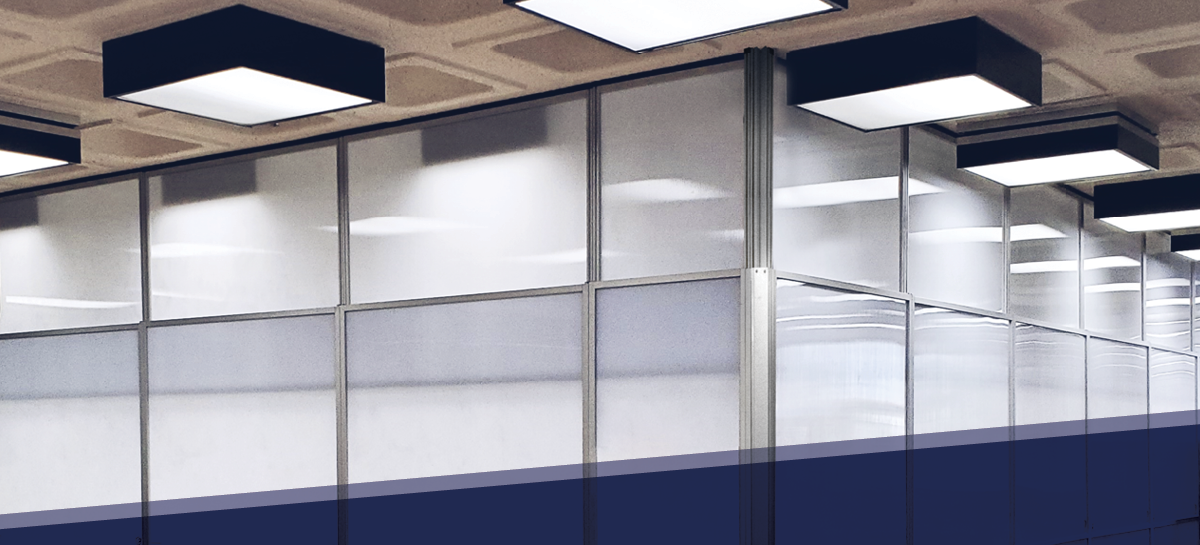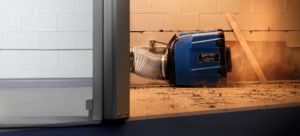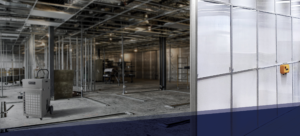5 Reasons Reusable Modular Walls are Becoming the Standard for Temporary Dust Barrier Walls
Air quality in healthcare facilities is a worldwide concern. In March 2022 the U.S. Environmental Protection Agency released the “Clean Air in Buildings Challenge”, a call to action for building owners of all kinds to take measures to reduce risks from airborne viruses and other containments indoors. This challenge encourages healthcare facilities, and others, to create an action plan for clean air, optimize air ventilation/filtration, and to showcase their efforts to building occupants and on social media. However, this challenge does not fully explore how maintenance and renovation efforts in healthcare facilities can negatively impact air quality.
Standard practice for healthcare facilities in the United States and Canada is the requirement of a temporary dust barrier wall during renovation and maintenance operations. Depending on the amount of dust expected to be disturbed during construction activity, contractors may opt to contain their area with plastic sheeting, drywall or with the latest innovation - a reusable modular containment system.
Ultimately, patient safety is a priority for healthcare facilities worldwide but worldwide government initiatives are driving the need for proper containment with new regulations. . Construction can cause substantial dust contamination and scatter large amounts of fungal spores, like aspergillus, to patients without protective measures. Here are five reasons why a re-usable, modular containment system is the new method your team should be deploying and why they are becoming the standard.
1. Successful Containment
Contractors should choose the best tools for the job to ensure Infection Control Risk Assessment (ICRA) compliance and superior infection control. They need a temporary containment system that seals, is easy to assemble and seamlessly incorporates other infection control equipment including HEPA level portable air scrubbers, HEPA vacuums and air pressure monitors.
Truly successful temporary containment should also not disrupt the flow of the hospital. These re-usable, modular containment barrier walls provide contractors with a professional look that easily hides construction activities from patients and healthcare workers. To ensure clean visuals, some companies offer that the containment panels can be customized with the facility’s personal logos and graphics.
2. Maintain Pressure and Airflow
Contractors must have the necessary equipment to filter and monitor airflow within the containment area created by the temporary dust barrier walls.
One of these necessary items would be portable air scrubbers with HEPA level filtration exhausted to either an existing indoor ventilation system or direct ventilation to the outdoors through an exit point such as a window or wall portal. Another would be a fixed or portable differential air pressure monitor that has visual or audio alarms, ensuring that the pressure and airflow is constantly controlled and recorded.
3. Reduce Hospital Acquired Illnesses
Hospital-acquired-illnesses are of a significant concern for everyone who steps foot in a hospital, including patients, visitors, or employees. This is especially important for patients that are immunocompromised and susceptible to infection from the slightest exposure to dust contaminants. Inhalation of indoor air pollutants from construction can negatively impact patients with chronic lung diseases but this can be prevented with effective dust control through containment units and barriers.
A modular containment system deployed before and during construction, where containment is properly ventilated and airflow is HEPA filtered, will prevent further infection and liability to the hospital and its workers.
4. Reduce Costs and Speed Up Construction Timelines
The upfront fees and the time it takes for contractors to build traditional drywall barriers can be high, as the costs include materials, labor, disassembly and disposal of materials. Modular containment systems may appear more expensive initially but when you factor in the overall time savings at the build site in addition to compounded savings job over job, going modular far outweighs the cost of drywall assembly.
A modular, adaptable containment system can fit into any job site and if it is reusable, you're not creating waste when it's time to move to the next job, compounding materials savings over time.
5. Promote Proactivity
Throughout the history of healthcare construction new innovations have made a huge impact in patient and worker safety. Now, modular containment systems are the next generation of temporary dust barrier walls since they can get construction started with less labor, less time, and virtually less dust.
Since they are able to easily incorporate existing hospital construction equipment, they are simply superior to other temporary methods. Through standardization, the re-usable panels and doors are helping contractors to become more efficient and more environmentally friendly with each project.
How do I get started?
Easy-to set-up temporary dust barrier walls from companies like Abatement Technologies® can remove additional stressors from maintenance operations with adaptable designs for every job. The AIRE GUARDIAN® SHIELD is modular and is designed to reduce contamination challenges for contractors working in critical environments and can help you achieve the five points above and more.
If you are a building operator in the United States or Canada and would like to find out more about Abatement Technologies offerings, please reach out on our website and you will hear from our team shortly.



